Day 2 :
Keynote Forum
Brojendra Agarwala
University of Chicago, Comer Children’s Hospital, USA
Keynote: History of development of pediatric cardiology
Time : 09:00-09:35

Biography:
Brojendra Agarwala has completed his MBBS from University of Kolkata, India and completed Pediatric Cardiology Fellowship from New York University Medical Center, New York, USA. He is a Pediatric Cardiologist and Professor of Pediatrics at the University of Chicago. He has received best teacher award by the pediatric residents and the medical students. He has published 68 papers in reputed journals. He is named as one of the top doctors and best pediatricians in Chicago magazine for many years.
Abstract:
In 2015, pediatric cardiology is a very well developed specialty. In the past, cardiology as a specialty was limited to the internists. For centuries, pediatric cardiology was developed into a specialty where only trained pediatricians in cardiology took care of fetuses with congenital heart disease (CHD), neonates and further followed them into adulthood. With excellent care, children with severe life threatening CHD are surviving into adulthood and leading productive lives serving the society as physicians, lawyers, MBAs and in many other professional and non-professional activities. In 1938, when Robert Gross ligated a patent ductus, a new era of pediatric cardiology was born. Clinical acumen, understanding of physiology, anatomy, angiography and development of extracorporeal circulation allowed caring for children with CHD which was previously lethal. A few interested pediatricians taught themselves and finally the subspecialty was born. In 1961, pediatric cardiology became the first subspecialty board in the USA. In the past 60 years, significant progress has been made in non-invasive imaging e.g., cardiac ultrasound, color-Doppler, MRI, and CT scan. Utilization of these modalities has made invasive diagnostic cardiac catheterization almost unnecessary. Development of interventional cardiac catheterization has almost replaced cardiac surgery in multiple CHD. For the past 50 years, pediatric cardiology was focused on diagnosis, patient care, education and clinical research. However, for the past 10 years basic research discoveries of the cause of the CHD have developed, which will hopefully prevent them from happening in the future. Pediatric cardiology is team work involving cardiologists, anatomists, physiologists, surgeons, intensivists, interventionists and the anesthesiologists. All play very important roles in caring for children with cardiac problem. In my presentation, I will discuss more in depth about the role of individual physicians and scientists that have helped to develop this wonderful subspecialty in pediatrics.
Keynote Forum
Maurice J B van den Hoff
University of Amsterdam, Netherlands
Keynote: Changing concept in heart developmnet
Time : 09:35-10:10

Biography:
Maurice J B van den Hoff obtained his PhD in 1994 from the University of Amsterdam. His thesis entitled, “Isolation and characterization of the rat carbamoylphosphate synthetase I gene”. After moving to the field of heart development with Prof. Moorman, he established his own group focusing on heart muscle cell formation and epicardial development after the formation of the linear heart tube. As a Visiting Scientist, he has developed a tight collaboration with the Medical University of South Carolina in Charleston (US). Currently, he is Vice-chair of the Department of Anatomy, Embryology & Physiology and AMC Principle Investigator and has published more than 86 papers (H-index 29) in peer-reviewed journals.
Abstract:
The development of the heart is a complex four dimensional process in which the heart, while functioning, transforms from a linear heart tube into a four-chambered heart. The use of genetically modified mice has considerably changed the insights in heart development in the past decade. In this keynote, the genetic model systems that have contributed to the altering insights in the mechanisms underlying heart development will be discussed and these novel insights will be highlighted. Secondly, developmental biologists have classically been focused on the first 10 weeks of human development with respect to heart development, because in this period the building plan of the heart is completed. However, after the first 10 weeks the heart needs to grow enormously and mature. At the end of gestation, the proliferative growth of the heart changes to hypertrophic growth. This change in mechanism of cardiac growth has important consequence for the response of the heart during pathology.
- Neoplastic Disorder of Pediatric Heart
Medical Management of Pediatric Heart Disorder
Cardiovascular Development or Cardiac Surgery

Chair
Christopher Snyder
Rainbow Babies and Children’s Hospital, USA

Co-Chair
Brojendra Agarwala
University of Chicago, Comer Children’s Hospital, USA
Session Introduction
Omer Faruk Dogan
Numune Education and Training Center, Turkey
Title: The management of post-surgery pediatric heart failure: Current and future developments
Biography:
Abstract:
Jorge A. Coss-Bu
Texas Children’s Hospital USA
Title: Nutrition Support Guidelines in the Cardiac Intensive Care Unit: Evidence or Expert Consensus based practice?
Time : 10:10-10:35

Biography:
Dr. Jorge A. Coss-Bu completed Pediatric residency and fellowship in Pediatric Critical Care Medicine at Baylor College of Medicine and Texas Children’s Hospital, Houston TX, USA; and appointed Associate Professor at the same institutions. He is board certified in Pediatrics and Pediatric Critical Care Medicine by the American Board of Pediatrics. He has over 100 scientific publications including manuscripts, abstracts and book chapters in the area of nutrition and metabolism of the critically ill child and his research work has been presented in 75 scientific events and invited to speak in more than 140 lectures in the US and worldwide.
Abstract:
The profound metabolic response of the patient admitted to the cardiovascular intensive care unit (CVICU) with a critical illness, including injury, surgical stress, or inflammation is not always predictable and varies in intensity and duration between individuals. The energy cost imposed by this metabolic response may be proportional to the severity and duration of the stress but cannot always be accurately estimated. Failure to recognize existing nutritional deficiencies and provide adequate nutrition support during the acute phase of the illness may exacerbate pre-existing malnutrition or result in new nutritional deficiencies. Both overfeeding and underfeeding should be avoided in order to decrease metabolic imbalances and development of malnutrition in critically ill patients. The nutritional plan should be individualized and customized to each patient during their CVICU admission. The impact of early enteral nutrition and optimal energy balance might be most relevant in patients with preexisting malnutrition, who cannot afford added nutritional worsening during the course of the acute illness. Enteral nutrition is preferred, but if enteral nutrition is not tolerated, parenteral nutrition should be started after patient condition has stabilized. A specialized nutrition support team in the CVICU and aggressive feeding protocols may enhance the overall delivery of nutrition, with shorter time to goal nutrition, increased delivery of enteral nutrition, and decreased use of parenteral nutrition. More research is needed in order to develop nutrition support guidelines for critically ill children admitted to the CVICU, in the mean time expert consensus recommendations should guide the care provided to these children.
Aris Lacis
University Children Hospital, Latvia
Title: Bone marrow derived progenitor stem cell transplantation as a temporary measure before heart or lung transplantation in children
Time : 10:35-11:00
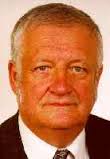
Biography:
Aris Lacis, Cardiac Surgeon, Professor, MD, PhD graduated Riga Medical Institute in 1961. General and thoracic surgeon in P. Stradina University Hospital in Riga (1964–1969). Thoracic and cardiac surgeon in the Latvian Centre for Cardiovascular Surgery (1969–1994). Since 1994 until 2012 – the head of Pediatric Cardiology and Cardiac Surgery Clinic in University Children’s Hospital, Riga; since 2012 – a consulting professor of this Clinic. Vice-president of Latvian Society for Cardiovascular Surgery. President of Latvian Association for Pediatric Cardiologists. Author of 395 scientific publications, 3 monographs and 13 patents.
Abstract:
Context: On a global level, stem cell research has been a major challenge during the last decade. There have been achieved positive results in experimental studies on animals and there have been identified several conditions in adult population where bone marrow derived progenitor stem cell transplantation (BMPSCT) may play a crucial role. Though, little is known about possible implementation of the BMPSCT in paediatrics, dilated cardiomyopathy and pulmonary arterial hypertension in particular.
Objective: To determine the role of BMPSCT in management of critically ill paediatric patients followed by assessment of safety and efficacy of the procedure.
Design, Settings, Participants: Two patients (9 and 15 years old) with trisomy 21 and severe pulmonary arterial hypertension due to uncorrected large ventricular septal defects were been admitted to our department to receive intrapulmonary BMPSCT procedure. Both patients underwent radionuclide scintigraphy before the procedure, followed by repeated scans 6, 12, 24 and 36 months after BMPSCT. Latest results show improvement of lungs vascularization. Seven patients (4 months – 17 years) with dilated idiopathic cardiomyopathy were admitted for intra- myocardial BMPSCT procedure. All seven patients underwent repeated clinical examination every two months, up to 4 years of age. We observed improvement of left ventricular ejection fraction, decrease of left ventricular end diastolic dimension by echocardiography and cardio-thoracic index at chest X-ray exams, reduction of serum brain natriuretic peptide serum levels and decrease of the stage of heart failure from stage IV to stage I, by NYHA classification. No per procedural harmful side effects were observed.
Conclusions: The results are promising and we suggest that BMPSCT might be used for the stabilization of the patient to get the time for further symptomatic treatment or serve as a bridge for heart or lung transplantation.
Maurice J. B. van den Hoff
Academic Medical Center, Meibergdreef, Netherlands
Title: Myocardium formation after the development of the linear heart tube
Time : 11:20-11:45

Biography:
Dr van den Hoff obtained his PhD in 1994 from the University of Amsterdam: “Isolation and characterization of the rat carbamoylphosphate synthetase I gene”. After moving to the field of heart development with Prof Moorman, he established his own group focusing on heart muscle cell formation and epicardial development after the formation of the linear heart tube. As a visiting scientist he has developed a tight collaboration with the Medical University of South Carolina in Charleston (US). Currently, he is vice-chair of the department of Anatomy, Embryology & Physiology and AMC Principle Investigator and has published in excess of 86 papers (H-index 29) in peer-reviewed journals.
Abstract:
Over the last decade knowledge on the formation of the heart has advanced substantially. It was long thought that within the linear heart tube, which is formed during the third week after fertilization in humans, all future adult cardiac compartments were already segmentally present. However, extensive molecular analyses in experimental animals have shown that the initially formed linear heart tube only comprises the left side of the interventricular septum and a small part of the left ventricular wall.
During subsequent development, the linear heart tube lengthens by the recruitment of mesodermal cells that differentiate into the myocardial lineage at both the arterial en venous poles. To discriminate the mesodermal cells that contribute to the forming heart at both distal borders of the heart tube, they are often dubbed the first and second heart fields. Within this lengthening heart tube the cardiac chambers are formed by local differentiation and proliferation. The latter concept is summarized in the ballooning model of heart development. In this presentation new insights in this field will be discussed.
Umesh Dyamenahalli
University of Chicago Medicine, USA
Title: Expansion of Medical Excellence Processes in Cardiac Intensive Care Unit: Routine bedside debriefing followed by Comprehensive Root Cause Analysis after CPR.
Time : 11:45-12:10
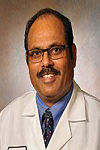
Biography:
Umesh Dyamenahalli is a pediatric Cardiologist and Intensivist; an Associate Professor, Director of Cardiac ICU and an Associate Chief Pediatric Cardiology at the University of Chicago. He has been the author for about 40 publications in reputable journals and few book chapters. He has been working in the field of quality enhancement; the new team initiatives are multidisciplinary and have changed practice and culture and enhanced patient, family and care providers’ satisfaction along with improved outcomes. As a recognized safety and quality expert, Umesh serves on the American College of Medical Quality Board.
Abstract:
Learning Objectives: Multidisciplinary post-CPR debriefing enhances problem understanding and team empowerment. A comprehensive Root-Cause-Analysis of CPR event enhances quality of care.
Introduction/Background: Advanced diagnostic and therapeutic modalities have improved survival and outcomes in cardiac ICU. In a complex medical environment, timely recognition and understanding pathogenesis of complications is paramount, which is achievable through debriefing and root-cause-analysis.
Initiative Description: Two initiatives are based on existing ideas and were integrated into routine practice to enhance the understanding of the problems using multidisciplinary approaches.
Innovation: Routine debriefing after CPR, in a complex ICU environment, have not been described. In-depth and routine, medical team initiated RCA after CPR has not been widely practiced and publicized.
Results/Outcomes: Since 2008, debriefings have been performed utilizing continuous PDSA cycles. This modified the management, resulted in comprehensive training initiatives, system improvement and creation of protocols. It impacted patient care and safety culture positively and empowers the staff. Since 2007 RCA after CPR events performed. In about 50% events, review suggested areas for improvement in management.
Lessons Learned: Clinical debriefing in CICUs is feasible, positively impacts quality of patient care, enhances safety culture, improves occurrence reporting and empowers staff. Routine Post-CPR, RCA is feasible in a busy CICU. In complex patients, these reviews serve as a model tool to enhance patient care, team education and avert some CPR event.
Omer Faruk Dogan
Numune Education and Training Center, Turkey
Title: The Management of Post-surgery Pediatric Heart Failure: Current and Future
Time : 12:10-12:35

Biography:
Dr. Dogan has completed his degrees in Hacettepe University Medical Faculty, Ankara, Turkey. He completed Pediatric Cardiovascular Surgery fellow-ship program in 2006 after adult cardiovascular surgery residency. His study is continued in Cardiovascular Surgery and Pediatric Cardiology Clinic in the same university. He is the director of Adult and Pediatric Cardiovascular Surgery. He is an Editor in Chief of Case Reports in Medicine. He also is member of Editorial Board in eight international scientific journals. He had more than 70 papers in reputed journals.
Abstract:
As we know that heart failure is a complex pathology that may be seen in children with congenital heart disease include development of cardiomyopathies due to myocarditis. In general, this severe clinical condition is associated with a high rate of morbidity and mortality and places a significant burden on families. Current medical and/or surgical treatment modalities are taken largely from the management of heart failure in adults, though clear survival benefit of these medications are lacking. There is no adequate published data on the overall prevalence or incidence of heart failure in children. However, the success of mechanical circulatory support in management of heart failure has raised the prospect of a previously unavailable treatment modality. Heart transplant remains the gold standard treatment, but the number of patients requiring this treatment far outweighs the donor availability.
It is therefore not surprising to see the popularity of various circulatory support modalities, with devices ranging from veno-arterial extra-corporeal membrane oxygenation (ECMO) to ventricular assist devices which have different properties such as pulsatile or continuous flow management. Indication, timing and the choice of the type of mechanical support are critical in order to avoid lethal complications. In many patients we can see that hemorrhage due to continuous anti coagulation requirement, thrombo-embolism and infections. In pediatric patients with heart failure, mechanical supporting system is used rarely for bridge to transplantation in many of centers. Active research is currently underway to develop newer and more durable devices that will assist the pediatric population across all age groups. The combined experience developed through the usage of different devices in pediatric and adult populations has led to the application of mechanical circulatory support in some subgroups of grown–up congenital heart diseases patients, particularly those with systemic right ventricular failure. Left and/or right ventricular assist programs and/or the use of Para corporeal supporting devices combined with indicators and VADs have taken an increasingly main role in the management of advanced heart failure in children. The predominant devices have been used for bridge to heart transplantation. Excellent results are currently achieved for most children who requiring surgery.
There is an ongoing investigation to improve outcomes in high-risk populations, such as small infants and those with complex congenital heart disease. Additionally, there is an active investigation and interest in expansion of VADs beyond the predominant utilization as a bridge to a heart transplant into ventricular recovery, device ex-plant without a heart transplantation (bridge to recovery), and placement of devices without the expectation of destination therapy. Survival four years after hospital admission has been reported as only 70%. In the United States, it is currently estimated that greater than five million adults have heart failure with projections reaching greater than eight million by 2030. The mortality at five-years after the diagnosis of heart failure remains at approximately 50%. The authors concluded that the costs of heart failure estimates in the United States will be $70 billion in the near future.
Andreas C Petropoulos
Azerbaijan State Medical University, Azerbaijan
Title: Strategies to prevent cardiac diseases in childhood
Time : 12:35-13:00

Biography:
Dr. Andreas Petropoulos graduated from Aristotle University’s Medical School, Greece in 1989. Followed 30 year career as a medical officer, senior Flight Surgeon in the Hellenic Air-Force. Specialized in Aviation, Hyperbaric Medicine, Pediatrics, Fetal, Pediatrics and Congenital Cardiology in USA and Europe. Holds M.Sc. in Preventive Cardiology. AEPC Prevention Working Group member. Worked and lectured in Athens and Brussels universities. Currently consults in Fetal, Pediatrics, Congenital Cardiology in Merkezi Klinika and is Associate Professor at the State University and Post Graduate and CME Center in Azerbaijan. His research focuses on prevention, CVD imaging techniques, fetal cardiology, heart failure.
Abstract:
The burden of cardiac disease is a sum of 1% of the general population suffering from Congenital Heart Disease (CHD) and an unknown high prevalence of acquired disease. Cardiomyopathies, arrhythmias - sudden cardiac death, rheumatic heart disease, hypertension and accelerating atherosclerosis are among the most frequent. Adding on, genetic syndromes including cardiac defects, endocarditis and myocarditis we can address a large pediatric population worldwide, suffering from heart disease. Diagnosis and treatment of these diseases are not afforded in many countries worldwide due to luck of human and material resources. The aim of this paper is to describe how some of the above mentioned can be either early detected or prevented. We focus on some forms of sever CHD, sudden cardiac death linked to sport activities and detecting- preventing CVD in the young. Measurements of pre and post ductal saturation of oxygen using pulse oximeteres, on the third day from birth, can early and cheap detect Ductal Arteriosus dependent pulmonary/ systemic and cyanotic CHD’s, saving lives. The use of a combination of detailed medical history, physical examination and 12 lead ECG, during a pre-participation in sport activities screening test can prevent sudden cardiac death. Screening and treating existent risk factors for CVD as well as preventing obesity and hypertension, contributes in the burden of CVD.
Christina Pagel
University College London, UK
Title: Monitoring mortality and morbidity after heart surgery in children: why, what and how?
Time : 14:20-14:45

Biography:
Christina Pagel is a researcher at Clinical Operational Research Unit, University College London, Gower Street, London, WC1E 6BT, UK
Abstract:
Routine monitoring of outcomes following surgery can drive service improvement and was pioneered in adult cardiac surgery. Since 2001, all cardiac procedures in children have been subject to mandatory reporting and publication in the UK. But in the rapidly developing and complex area of paediatric cardiac surgery, what are the most appropriate outcomes to measure and how should they be reported? Mortality has often been perceived as a straight forward measure of outcome and is often used to evaluate surgical performance. Currently in the UK, mortality within 30 days of heart surgery in children is monitored and published by the national audit body and each hospital’s mortality outcomes are benchmarked against recent national outcomes using the Prais risk model (1,2).
However, there are nonetheless some disadvantages to using mortality as an outcome measure (3,4). In the welcome context of falling mortality rates, morbidities following heart surgery in children are considered an ever more important outcome but they are potentially many, much more difficult to define, more difficult to measure routinely and we do not know which morbidities are the most important to track. In this talk, I will discuss the benefits and risks of monitoring mortality and an ongoing ambitious research project in the UK (5) to select, define and measure morbidities following heart surgery in children.
Natasa Chrysodonta
University of Bristol, UK
Title: A systematic review for the effectiveness of angiotensin receptor blockers vs beta-blockers in the management of aortic root dilation in Paediatric Marfan syndrome
Time : 14:45-15:10

Biography:
Natasa Chrysodonta has completed a medical degree in the University of Bristol, and a BSc in Medical Sciences and management in Imperial College London. Currently she is a foundation year 1 acute medicine doctor at Hinchingbrooke Hospital in Cambridgeshire.
Abstract:
Marfan syndrome is a rare inherited connective tissue autosomal dominant disease. The vast majority of the affected population will develop cardiovascular complications, with aortic-root dissection being the leading cause of the death in this cohort. It also leads to premature death, with 50% mortality in adulthood if left untreated. Currently, beta-blockers are the standard therapy used in the management of aortic root dilation in Marfa’s syndrome, as it has been shown to decrease the rate of the dilation. Within the last decade a number of studies have begun to assess the effectiveness of angiotensin – II receptor blockers (Arb) vs. beta-blockers in the management of aortic root dilation in Marfan syndrome.
The aim of this systematic review is to examine the use of Arb vs. Beta-blockers in the management of aortic root dilation in pediatric patients with Marfan syndrome. Four main databases were used for the article search – Cochrane, Medline, PubMed and EMBASE, using the following terms: “Aortic dilation”, or “aorticpathology”, or “aortic contract”, and “marfan”, or “Marfan syndrome”, and beta-blockers, or b-blockers, or adrenergic beta antagonist, and arb, or angiotensin receptor blocker, or angiotensin-II receptor blocker. The primary outcome was defined as the normalised rates of aortic dimensions before treatment initiation compared with follow-up measurements after treatment initiation (z-score). A total of 7 studies were identified, out of which only 3 have published results and were included in the review. Two of the studies which compared the combination of beta-blockers and Arbs vs. beta-blockers alone, showed inconsistent results. The 3rd study, which compared Arbs vs. beta-blockers alone, revealed that the prophylactic use of either medication had a similar effect in both groups. Currently the evidence suggests that Arb and beta-blockers slow down the progression of aortic root dilations. However, more randomised control trials are needed in order to draw clear conclusions on whether Arbs are more effective than beta-blockers in the management of aortic root dilation in Pediatric Marfan syndrome.
Munesh Tomer
Medanta- The Medicity, India
Title: Neonates and infants with critical cardiac lesions and preoperative clinically proven/culture positive sepsis: Is waiting or refusing surgery justified?
Time : 15:10-15:35

Biography:
Munesh Tomar is a well-known pediatrician in the country with about 10 to 15 years of work experience in the field of pediatric cardiology. Presently she is working as a Senior Consultant in the Department of Pediatric Cardiology and Congenital Heart Disease in Medanta, Gurgaon since March 2011. The major areas in which she is an expert includes- Echocardiography, transthoracic including 3D, trans esophageal Ech. fetal echocardiography, evaluation and management of arrhythmias, diagnostic cardiac catheterization etc.
Abstract:
Objective: Advances in cardiac surgery has led to strong emphasis on performing corrective surgery early in life for most congenital heart defects. In developing countries it is common to see babies with critical cardiac condition presenting late with secondary complications, the most common being infection. We present our experience on the outcome of these small infants when operated with on-going sepsis. Method: Hospital records of 194 consecutive neonates and small infants (age-birth to 6 months) who underwent surgical intervention between January 2012 and December 2014 were retrospectively reviewed. Group A includes patients presenting with sepsis in need of early surgery. Group B includes babies undergoing elective surgery. In group C we have included the patients with proven or probable sepsis needing early intervention but we waited for stabilization. Echocardiography diagnosis was comparable in all three groups. Main outcome measures were duration of ventilation, inotropic scores, oxygen dependency, total ICU stay and hospital stay, postoperative bloodstream infection and mortality. Conclusions: Preoperative infection contributes significantly to operative morbidity and mortality, but delay in intervention further compromises the outcome. The overall result of this study indicates that intervening early is cases requiring early/emergency surgery; even in the presence of sepsis is associated with reasonably good outcome vis-a-vis compare with cases in which surgery was delayed due to sepsis.
Hady Atef
Cairo University, Egypt
Title: Effect of Low Level Laser on Healing of Moderate Sized Induced Septal Defects on Rabbits
Time : 15:55-16:15
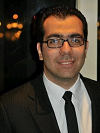
Biography:
Hady Atef is a teacher assistant at faculty of physical therapy, Cairo University, Egypt. He had his master degree from the same university; he is interested in researches about congenital heart disease. He is a former editor at many international journals. He is now completing his experimental work about laser applications in congenital heart defects.
Abstract:
Background and purpose: congenital ventricular septal defects are among the most frequently reported congenital heart defects. The aim of this study was to investigate the response of LASER irradiation on induced ventricular septal defects.
Subjects and Methodology: twenty male rabbits who underwent induction for ventricular septal defects by cardiac puncture technique with age ranged 6-10 months enrolled in that study for one and half months. They were assigned into two groups: Group (A): The experimental group consisted of 10 rabbits who received routine animal care associated with LASER irradiation.
Group (B): The control group consisted of 10 rabbits who received routine animal care alone. The program continued for one and half months. Sizes of the septal defects were measured for both groups at the beginning of the study and after the end of one and half months.
Results: There was significant decrease of size of the diameter of the induced ventricular septal defect with study group (percentage of improvement 22.17%) when compared with control group.
Conclusion: It was concluded that LASER therapy can be considered as a promising therapy for congenital heart defects in animals and to be examined on children after then.
Alzbeta Tohatyova
Pavol Jozef Safarik University, Slovakia
Title: Relationship between structural and functional changes of the left ventricular and uric acid and obesity in children and adolescent
Time : 16:15-16:35

Biography:
Alzbeta Tohatyova is currently a PhD student at Medical Faculty, P J Safarik University in Kosice, Slovakia, Central Europe. Her research interests focus on childhood obesity, structural and functional changes of the left ventricular in case of obesity in children.
Abstract:
Nowadays, hyperuricemia, as a cardiovascular risk factor, is considered one of the metabolic syndrome component, and it is closely correlated with obesity and the body fat accumulation level. No data have been published regarding the influence of the Uric Acid (UA) level on the structural and functional changes of the left ventricular in case of obesity in children, and thus the aim of our study was to assess the influence on UA in obese children. In 25 (age 13, 0±2, 3) overweight and obese subjects and 24 lean controls, blood pressure, WC, fasting plasma glucose and insulin, UA were measured. Left Ventricular (LV) and Left Atrium (LA) structural and functional parameters were measured by transthoracic echocardiography. In patients with obesity and overweight were significantly structural changes: Higher LV thickness, LV mass, LV size, as -well as functional changes: higher LV volume, LV stroke volume (LV SV) and impaired LV diastolic indexes. The UA values were higher in overweight and obese children, but this increase was not significant. Simple linear analysis showed a correlation of UA with LV thickness, relative wall thickness, LV size and area, LV volume diastole, LV SV and LV ejection fraction. In this study, we confirmed structural and functional changes of left heart in terms of LV volume overload in childhood obesity. This change seems to be influenced by UA, but the association between the signs of left volume overload and UA has not yet been clarified. This research would require other studies with a larger amount of patients.
Pan Bo
Children’s Hospital of Chongqing Medical University, China
Title: Alcohol exposure induced Histone3 Lysine9 hyperacetylation and over-expression of heart development-related genes both in vitro and in vivo
Time : 16:35-16:55

Biography:
He is a Doctoral candidate of Chongqing Medical University at China. He is working under the Supervisor of Professor Jie Tian.
Abstract:
Background: Alcohol abuse during gestation may cause congenital heart diseases (CHD). The underlying mechanisms of alcohol induced cardiac deformities are still not clear. Recent studies suggest that histone modification may play a crucial role in this pathological process. The aim of this study is to investigate the effect and the mechanisms of alcohol exposure on histone acetylation modification and the expression of heart development-related genes during heart development.
Material & Methods: Cardiac progenitor cells and KM mice were used in in vitro and in vivo studies respectively. Pregnant mice were gavaged with ethanol or saline every day in the morning from E7.5 to E15.5. Western blotting and real-time PCR were employed to determine H3AcK9 acetylation and gene expression. HATs and HDACs activities were detected by colorimetric assay and fluorometric assay. Chromatin immunoprecipation (ChIP) assay was used for the detection of H3AcK9 acetylation level in the promoter region of heart development-related transcription factors.
Results: Low level of ethanol or its metabolites had little effect on H3AcK9 acetylaiton or the expression of heart development-related genes. However, high doses of ethanol and acetate significantly increased H3AcK9 level and augmented the expression of GATA4 and Mef2c (p<0.05). In whole animal experiments, the level of H3AcK9 acetylation reached peak at E17.5 and decreased sharply to a low level at birth and maintained at low level afterward. Alcohol exposure increased H3AcK9 acetylation at E11.5, E14.5, E17.5 and E18.5 respectively (p<0.05), and enhanced the expression of Gata4 in the embryonic hearts at E14.5 and E17.5, Mef2c at E14.5 and Nkx2.5 at E14.5 and E17.5, (p<0.05) but not for Tbx5 (p>0.05). On embryonic day 17.5, HATs activities of embryonic hearts increased significantly, however alcohol exposure did not alter HDACs activities. H3AcK9 level in the promoter of Gata4 and Nkx2.5 were increased significantly (p<0.05).
Conclusion: Alcohol exposure both in vitro and in utero may induce an increase of HATs activities, which results in H3K9 hyperacetylation and an enhanced expression of heart development-related genes.
Rogelyn F Tapuro-Olais
Philippine Heart Center, Philippines
Title: Effects of early versus routine determination of prothrombin time and activated partial thromboplastin time in postoperative bleeding among pediatric patients undergoing cardiopulmonary bypass
Time : 16:55-17:15

Biography:
Dr. Rogelyn F. Tapuro-Olais has completed her medical degree at Saint Louis University and internship at Philippine General Hospital. She had her pediatric residency training at Saint Louis University Hospital where she won first place in the Annual Residents’ Research Contest in 2009. She completed her 3-year fellowship training in Pediatric Cardiology at the Philippine Heart Center. Presently, she is a clinical research fellow in echocardiography at the same institution.
Abstract:
Background: Excessive bleeding after cardiopulmonary bypass (CPB) continues to be an important cause of morbidity and mortality for both adult and pediatric population.
Objectives: 1) To determine the incidence of postoperative bleeding among children with cyanotic and acyanotic heart disease undergoing CPB with early and routine determination of PT and PTT; 2) To determine if there is significant difference in bleeding outcomes in early versus routine determination of PT and PTT levels among children with cyanotic and acyanotic heart disease undergoing CPB; 3) To determine if there is significant difference in the number of blood products transfused in early versus routine determination of PT and aPTT levels among children with cyanotic and acyanotic heart disease Methods: Double-blinded randomized controlled trial was done. One hundred twelve children who underwent open heart surgery from February 2012 to December 2012 at Philippine Heart Center were included. Fifty-six had cyanotic heart disease and 56 had acyanotic heart disease. Each group was subdivided into group A and group B. Group A had early determination of PT and aPTT (blood sample taken after CPB) while group B had routine determination of PT and aPTT (blood sample taken after surgery). Chest tube drainage was recorded for 24 hours and this was the measure for postoperative bleeding. Volume of blood products transfused was also recorded. Chi-square and T tests were used for statistical analysis. Results: The study showed 32.1% incidence of significant postoperative bleeding among patients with cyanotic CHD with group A while 39.3% with group B (p value=0.00). And the volume of PRBC transfused among the cyanotic subjects in group B is higher at 14.54 cc/kg compared to group A at 9.89 cc/kg (p value=0.05). While among the acyanotic patients, there was no significant difference in the incidence of significant postoperative bleeding and volume of transfused blood products.
Conclusion: There is higher incidence of significant postoperative bleeding in cyanotic patients, group B than group A. Also, the volume of PRBC transfused among cyanotic patients in group B is larger compared to group A. Whereas, among acyanotic patients, there is no significant difference in the incidence of significant postoperative bleeding and volume of transfused blood products between group A and B.
Tolga Kurt
Canakkale Onsekiz Mart University, Turkey
Title: Pediatric Extracorporeal Life Support Systems and Pediatric Cardiopulmonary Perfusion Systems: Now and Future
Time : 17:15-17:35

Biography:
Dr. Tolga KURT has completed his PhD at the age of 24 years from Pamukkale University School of Medicine and postdoctoral studies from Bulent Ecevit (Karaelmas) University School of Medicine. He became a cardiovascular surgeon at the age of 32 years. He and his colleagues open the first Cardiovascular Surgery Simulation Laboratory in 2013 (third in Europe) for the cardiac surgery operations and cardiac perfusion simulation. He gives lessons to the perfusionists to improve their use of pediatric extracorporeal life support and pediatric cardiopulmonary bypass systems. He has published more than 30 papers in reputed journals and has been serving as an editorial board member of repute. He also published a book about cardiopulmonary bypass perfusion.
Abstract:
Pediatric cardiac perfusion systems are still the most important systems for the success of the pediatric cardiac surgery. Pediatric extracorporeal life support (ECLS) is instituted for the management of life threatening pulmonary or cardiac failure. Although new tecnologies has developed, the pediatric cardiopulmonary circuit size shows so much diversity when compared with the adult perfusion systems. For example, the prime volume used in cardiac surgery for adults is about 25-33% of the total blood volume but the pediatric cardiac patients are 2-3 times more of the total blood volume, so we have to search for new technologies. There are different types of roller and centrifugal pumps used in pediatric cardiopulmonary perfusion systems like Medos Deltastream DP3, Levitronix CentriMag, Medtronic Affinity CP, Terumo CAPIOX SP, Medtronic BPâ€50 Bioâ€Pump etc. These pumps priming volume are different from each other so we have to use the best pump for our pediatric cardiac patients. There are also different types of oxygenators and arterial filters. The ultrafiltration perfusion systems can also be used for the increase of heamoglobine levels, for removing the inflammation mediators, citrate, lactate from the blood. (Medivator Hemocor HPH Jr, Terumo CAPIOX Hemoconcentrator, Medos Hemofilter Pro 60 etc). When pediatric cardiac patients need a myocardial or pulmonary support or is waiting for the operation time, we use pediatric extracorporeal life support systems: ECMO (Extra Corporeal Membrane Oxygenator), and ECCO2R (Extra Corporeal CO2 removal) are used less than 30 days and, VAD (Ventricular assist devices) are used more than 30 days for cardiac supports.

Biography:
Dr. Rogelyn F. Tapuro-Olais has completed her medical degree at Saint Louis University and internship at Philippine General Hospital. She had her pediatric residency training at Saint Louis University Hospital where she won first place in the Annual Residents’ Research Contest in 2009. She completed her 3-year fellowship training in Pediatric Cardiology at the Philippine Heart Center. Presently, she is a clinical research fellow in echocardiography at the same institution.
Abstract:
Background: Excessive bleeding after cardiopulmonary bypass (CPB) continues to be an important cause of morbidity and mortality for both adult and pediatric population. Objectives1) To determine the incidence of postoperative bleeding among children with cyanotic and acyanotic heart disease undergoing CPB with early and routine determination of PT and PTT; 2) To determine if there is significant difference in bleeding outcomes in early versus routine determination of PT and PTT levels among children with cyanotic and acyanotic heart disease undergoing CPB; 3) To determine if there is significant difference in the number of blood products transfused in early versus routine determination of PT and aPTT levels among children with cyanotic and acyanotic heart disease Methods: Double-blinded randomized controlled trial was done. One hundred twelve children who underwent open heart surgery from February 2012 to December 2012 at Philippine Heart Center were included. Fifty-six had cyanotic heart disease and 56 had acyanotic heart disease. Each group was subdivided into group A and group B. Group A had early determination of PT and aPTT (blood sample taken after CPB) while group B had routine determination of PT and aPTT (blood sample taken after surgery). Chest tube drainage was recorded for 24 hours and this was the measure for postoperative bleeding. Volume of blood products transfused was also recorded. Chi-square and T tests were used for statistical analysis. Results: The study showed 32.1% incidence of significant postoperative bleeding among patients with cyanotic CHD with group A while 39.3% with group B (p value=0.00). And the volume of PRBC transfused among the cyanotic subjects in group B is higher at 14.54 cc/kg compared to group A at 9.89 cc/kg (p value=0.05). While among the acyanotic patients, there was no significant difference in the incidence of significant postoperative bleeding and volume of transfused blood products. Conclusion: There is higher incidence of significant postoperative bleeding in cyanotic patients, group B than group A. Also, the volume of PRBC transfused among cyanotic patients in group B is larger compared to group A. Whereas, among acyanotic patients, there is no significant difference in the incidence of significant postoperative bleeding and volume of transfused blood products between group A and B.
Aarti C Bavare
Baylor College of Medicine, USA
Title: Rapid Response to critical deterioration of pediatric cardiac patients: characteristics and outcomes

Biography:
Dr Aarti Bavare has completed her Pediatric residency at the Children’s Hospital Boston and Boston University combined pediatric residency program. She has received fellowship training in pediatric critical care and pediatric cardiac critical care at Texas Children’s Hospital and Baylor College of Medicine. She is currently an Assistant Professor of Pediatrics at Baylor College of Medicine and is the Medical Director of the house-wide Pediatric Rapid Response System at Texas Children’s Hospital. Her research interests include critical communication, resource utilization to serve critical needs of children and simulation medicine.
Abstract:
The Rapid Response (RR) system is a multidisciplinary modality to detect, trigger and provide response to clinical decompensation of patients outside the Intensive Care Unit (ICU). There is growing evidence to support that early detection of physiologic deterioration and prompt response can decrease adverse outcomes i.e cardiopulmonary arrest or mortality.
Pediatric cardiac patients are highly vulnerable to decompensation needing emergent intervention and treatment. We sought to explore the frequency and pattern of utilization of RR by these patients and their outcomes.
We conducted a retrospective review study at a large tertiary care referral pediatric heart center. We reviewed 1906 RR events that occurred in our center over a period of three years. Out of these 152 occurred in cardiac patients. We reviewed the charts of the patients involved in these events with respect to the demographic characteristics, reason for RR event, interventions needed and outcomes thereafter.
The results provide useful insight into causes of acute clinical deterioration in pediatric cardiac patient population. The important observations made during this research will hopefully be a useful guide to direct initiatives to improve care and resource allocation to this high risk population.

Biography:
Dr. Siegel completed medical school at State University of New York, Downstate and radiology training at Mallinckrodt Institute of Radiology, Washington University School of Medicine (WUSM), St. Louis, Missouri. She is board certified in both Radiology and Pediatrics. She is currently professor of Radiology and Pediatrics at Washington University School of Medicine. She is the author of over 250 journal articles, 40 chapters, and 15 books, including a comprehensive textbook on pediatric body computed tomography and a textbook on adult congenital heart disease. She also has written several Magnetic Resonance Clinics of North America that were devoted to pediatric MRI.
Abstract:
Congenital vascular anomalies of the thorax represent an important group of entities that can occur either isolated or associated with different forms of congenital heart disease. From a clinical viewpoint, they can be totally silent, or because of associated cardiac anomalies or compression of the airway and esophagus result in cardiovascular, respiratory or feeding problems that result in morbidity and mortality. For patient management, it is extremely important that radiologists, surgeons and cardiologists have a clear understanding of these entities, their imaging characteristics and clinical relevance.
The imaging armamentarium available in the diagnosis of these diverse conditions is ample, and has evolved from such traditional methods as chest radiography and angiography to new modalities that include multidetector CT and magnetic resonance imaging (MRI). These imaging modalities have added safety, speed and superb resolution in diagnosis and in the case of CT provide additional information about the airway and lung parenchyma resulting in a more comprehensive examination with greater anatomic coverage. The purpose of this lecture is to review the most important congenital thoracic vascular anomalies, their clinical presentation and imaging characteristics with an emphasis on MDCT and MRI.
Serban Stoica
Children’s Hospital and the Heart Institute, UK
Title: Early reoperations in a 5-year national cohort of congenital heart disease patients
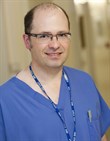
Biography:
Serban Stoica is working as Consultant Cardiac Surgeon at Children’s Hospital and the Heart Institute, Bristol. Previously he was working at King Fahd Armed Forces Hospital. He practice congenital heart surgery in all age groups and I also retain an active interest in all forms of surgery for adult acquired heart disease (coronary surgery, valve repairs, aortic surgery etc.). He is Educated from The University of Sheffield, UK.
Abstract:
OBJECTIVE: 1. To determine the quantitative burden of early congenital reoperations; 2. to evaluate if reoperation within the first 30 days is a suitable metric of quality of care.
METHODS: Anonymised data on early reoperations were extracted from the UK National Institute for Cardiovascular Outcomes Research (NICOR) for 2005-2010.
RESULTS: 19239 procedures were identified in 15552 patients. During data cleaning 723 reoperations were excluded (3.8%) and the remainder were adjudicated to predefined categories. 676 early reoperations (3.5%) were recorded in 593 patients, ranging from 1-7/patient (median 1/patient). Cases included/excluded and their prevalence are shown below (Table). The cases excluded a priori are likely under-represented as practices vary between centres (e.g. for reopening) and for submitting minor procedures data to NICOR. There are many complex scenarios where surgical teams choose operative adjustment (e. g. in palliative procedures) or planned/complex operative sequences to mitigate survival. For retained patients the median age and weight were 4.0 kg and 0.19 years and18.2% of them were readmitted for reoperation. Independent risk factors were sought by multivariate analysis. The most common reoperations were in patients palliated by shunting.
CONCLUSIONS: Reoperations within 30-days are infrequent. Those that can be accurately included in a retrospective analysis are no more prevalent than death (3.2%). ‘Unplanned’ reoperation is a misnomer as only a minority can be classified as such. Prospective studies are under way to establish the definitions and true prevalence of reoperations. Until these studies are completed, inclusion of unplanned surgery on quality of care dashboards is debatable.
Constance G. Weismann
Yale University School of Medicine, USA
Title: Right Ventricular and Pulmonary Valve Function Before and After Pulmonary Valve Replacements - Comparison of Transcatheter vs. Surgical Approach

Biography:
Dr. Weismann completed her medical training at Georg-August Universitaet Goettingen, Germany. Following a clinical year in the Pediatric Heart Center Giessen, she moved to New York where she completed pediatric residency and pediatric cardiology fellowship training in the accelerated research pathway. During that time she was awarded the Glorney-Raisbeck fellowship. Since 2010 Dr. Weismann has been Assistant Professor of Pediatrics in the Division of Pediatric Cardiology at Yale School of Medicine with a clinical focus on echocardiography. Her research interests focus on vascular-ventricular interaction, right ventricular function assessment by echocardiography, and pulmonary hypertension in infants with bronchopulmonary dysplasia.
Abstract:
Background: Trans-catheter (TC) pulmonary valve replacement (PVR) has become common practice for patients with right ventricular outflow tract obstruction (RVOTO) and/or pulmonic insufficiency (PI). The aim of this study was to compare patients who received trans-catheter Melody valves to those who underwent surgical PVR before, and a t two time points following PVR.
Methods: Retrospective review of echocardiograms obtained at three time points: last study before PVR, first study after PVR, most recent follow-up. We recorded patient characteristics and echocardiographic parameters of right ventricular (RV) and valve function. RVOTO was graded according to ASE guidelines for pulmonic stenosis (moderate: peak velocity 3-4m/s). Statistical methods included Chi-square, linear regression and mixed linear model to control for co-factors.
Results: We identified 76 patients who had undergone TC (N=42) or surgical (N=34) PVR between 2011 and 2014. Mean age was 21(±14) years. There was no difference between the groups in age or body surface area. At baseline, more patients in group TC had at least moderate RVOTO with or without PI (32/42 vs 3/34, p<0.001), and predominant PI was less common (10/42 vs. 29/34, p<0.001). At initial post-procedural echocardiogram there was no difference in valve function. 86% had at most mild RVOTO and 97% at most mild PI. At most recent follow-up, however, there was more valve dysfunction in the surgical group (moderate RVOTO 3/32 vs 10/26, p=0.03; mild or moderate PI: 0/32 vs 10/26, p=0.002). This remained significant after correcting for length of follow-up. 63 patients had quantitative assessment of RV function at a minimum of two time points. They were included in a mixed linear model that compared RV function between the groups, and controlled for predominance of RVOTO and/or PI prior to PVR. The TC group had an immediate increase in RV S’, but none of the other parameters changed significantly (table 1). Following surgical PVR there was an acute decrease of TAPSE, S’ and E’, that only partially recovered at follow-up.
Conclusion: Melody valve placement is associated with better pulmonary valve function in follow-up. Patients with surgical but not TC PVR had decreased RV function in follow-up, even when controlling for RVOTO and/or PI prior to PVR. Melody valve should therefore be the first choice for patients who are considered for PVR whenever possible.
Ali Dodge-Khatami
University of Mississippi, USA
Title: Alternative Strategies in Newborns and Infants with Major Comorbidities to Improve Congenital Heart Surgery Outcomes at an Emerging Program

Biography:
Prof. Ali Dodge-Khatami studied medicine in Geneva, Switzerland (1991), is board certified as a cardiovascular surgeon in Switzerland since 1998 (The Netherlands (2001, Germany 2008), and obtained his PhD from the University of Amsterdam, The Netherlands (2003). Since 2000, he is committed full-time to Congenital Heart Surgery, published 99 peer-reviewed articles, co-authored 9 book chapters, and continues with animal laboratory research along with student/resident teaching at academic facilities. He was head of the Congenital Heart Program in Hamburg, Germany (2008-12) and is Chief of Pediatric Cardiac Surgery at UMMC Jackson, Mississippi, USA since 2013. His interests include tennis, skiing, scuba diving, and teaching congenital heart surgery during humanitarian surgical missions in developing countries.
Abstract:
Introduction: Debilitating patient-related non-cardiac comorbidity cumulatively increases risk for congenital heart surgery. At our emerging program, flexible surgical strategies were employed in high-risk neonates and infants generally considered inoperable, in an attempt to make them surgical candidates and achieve excellent outcomes.
Materials & Methods: Between April 2010 and November 2013, all referred neonates (143) and infants (308) (average scores: RACHS 2.8 and STAT 3.0) underwent 451 primary cardiac operations: Biventricular lesions underwent standard (n=294) or alternative (n=19) repair/staging strategies (pulmonary artery banding(s), ductal stenting, right outflow patching). Uni-ventricular hearts followed standard (n=103) or alternative hybrid (n=35) staging. The impact of major pre-operative risk factors (37%), standard or alternative surgical strategy, prematurity (44%), gestational age, low birth weight, genetic syndromes (23%), and major non-cardiac comorbidity requiring same admission surgery (27%) was analyzed on need for extracorporeal membrane oxygenation (ECMO), mortality, length of intubation, intensive care unit (ICU) and hospital stays.
Results: ECMO need (8%) and hospital survival (94%) varied significantly between surgical strategy groups (p=0.01 and p=0.0384, respectively). In high-risk patients, alternative bi and uni-ventricular strategies minimized mortality, but were associated with prolonged intubation and ICU stay. Major pre-operative risk factors and lower weight at surgery significantly correlated with prolonged intubation, hospital length of stay and mortality.
Discussion: In our emerging program, flexible surgical strategies were offered to 54/451 high-risk neonates and infants with complex congenital heart defects and significant non-cardiac comorbidity, in order to buffer risk and achieve patient survival, albeit at the cost of increased resource utilization.
Daniel Cortez
Children’s Hospital Colorado, USA
Title: Non-invasive electrocardiographic predictors of ventricular arrhythmias in patients with Tetralogy of Fallot
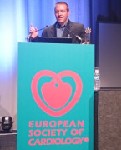
Biography:
Daniel Cortez Specializes in Pediatrics at Children’s Hospital Colorado, Aurora, CO, USA. Other Specialties are Anatomic & Clinical Pathology.
Abstract:
Introduction. Tetralogy of Fallot patients carry a significant ventricular arrhythmia risk burden. If the risk burden is known then at the time of pulmonary valve replacement cryoablation lines can be placed to help treat these arrhthyhmias. Vectorcardiographic (VCG) principles may provide additional clinical information to the 12-lead electrocardiogram (ECG). We hypothesize that not only the QRS duration, but other QRS-specific VCG parameters may have predictive value for determining ventricular arrhythmia (VA) risk in on Tetralogy of Fallot (TOF) patients undergoing pulmonary valve replacements (PVR’s).
Results. Of the 73 patients analyzed, 11(15%) had newly diagnosed ventricular tachycardia. The RMSQRS and the QRSd showed significant differences between those with and those without newly diagnosed VA. RMSQRS for those with and without VA were 12.3±5.2mV vs. 16.5±7.3mV respectively (p<0.033), A cut-off value of 11.2dmV gave sensitivity and specificity of 73% and 77% respectively. The QRSd significantly differentiated those with VA versus those without, with values of 141.0±36.3ms vs. 165.6±25.0ms, respectively. At a cut-off value of 152ms the sensitivity and specificity were 73% and 53% respectively. For either RMSQRS of <11.2dmV or QRSd of 162ms, the sensitivity and specificity for VA was 91% and 92%, respectively with a relative risk of 11.2. No significant differences were found for the other parameters tested between these two groups.
Conclusion. In this retrospective analysis of TOF patients undergoing PVR’s, VCG evidence of quantifiable lower QRS voltage combined with QRSd give non-invasive significant and clinically useful ventricular arrhythmia risk stratification, similar to that reported for more invasive procedures.
Paul Barach
University of Oslo, USA
Title: Assessing and improving teamwork in pediatric cardiac surgery care

Biography:
Paul Barach is a board-certified Anesthesiologist, with fellowship training in Cardiac Anesthesia, Critical Care medicine and human factors, at the Massachusetts General Hospital and Harvard Medical School where he trained and practiced. He set up the Centre for Safety at the University of Chicago, and founded the Centre for Patient Safety and Simulation at the University of Miami Jackson Memorial Hospital, where he was Associate Professor and Associate Dean for Patient Safety. He chaired the Jackson Memorial Hospital Patient Safety Committee and was the Medical Director for Quality for 3 years. He helped write the legislation and co-founded the Florida Patient Safety Corporation.
Abstract:
Background Cardiac surgery (PCS) has a low error tolerance, is dependent upon sophisticated organizational structures and demands high levels of cognitive and technical performance. The aim of the study was to assess the role of intraoperative non-routine events (NREs) and team performance on pediatric cardiac surgery outcomes. The current paper focuses on improving methods for studying teamwork; a companion paper will report on the empirical results.
Methods The authors trained human factors observers to observe and code the NRE’s and teamwork from time of arrival of the patient into the operating room (OR) to the patient handover in the intensive care unit. The observers underwent immersive training in which each observer attended 10 operations, learnt in detail about the technical procedures and clinical tasks and received practice in coding teamwork. Two observers were used interchangeably to observe OR teamwork. The authors instigated a rigorous training and assessment protocol, with independent assessment of their performance by both senior medical and human factors experts using video-based assessment. Real-time teamwork observations were supplemented with process mapping, questionnaires on safety culture, level of preparedness by the team, difficulty of the operation and outcome measures.
Results 19 PCS cases were observed. The observers observed a total of 255 hr of operations, including the first 10 training cases. We found that 68% of events were observed by one observer but only 32% of all events were observed by both observers. If an event was coded by both observers, 76% was coded in the same way, resulting in high levels of inter-rater agreement. The inter rater reliability of the four main teamwork categories was 91% with Cohen kappa of 0.77. Recommendations were developed for observing teamwork in the operating room, for instance ‘train observers on video recordings of real operations (not scripted performance), preferably of at least 1e2 h in duration’ and ‘Rate teamwork in real time and not afterwards.’
Conclusions PCS is an ideal model to explore team performance. A challenge for the future is to make observations of teamwork in healthcare settings more efficient and robust. Systematic and periodic assessment of observers is required when teamwork is observed in complex, dynamic settings.
Jeffery C. Hill
Hoffman Heart & Vascular Institute, USA
Title: Understanding Myocardial Mechanics: A Comprehensive Approach to Strain Imaging and Deformation in Infants and Children

Biography:
Jeffrey C. Hill received initial training in adult and pediatric echocardiography and cardiovascular imaging at Brigham & Women’s Hospital and Massachusetts General Hospital, Boston, MA, USA. Mr. Hill has over 16 years of clinical and teaching experience in a university-based academic environment at Harvard Medical School and the University of Massachusetts Medical School. He has co-authored manuscripts, abstracts and books with over 70 publications on cardiovascular ultrasound, research, and education.He has lectured on various topics in echocardiography at over 50 venues worldwide and has served on over 30 committees related to cardiovascular imaging.
Abstract:
This presentation is designed to provide insights on the application of conventional and advanced cardiac ultrasound concepts used in the assessment of myocardial deformation in congenital heart disease and palliative procedures. The presentation includes the maturation of myocardial mechanics, fiber orientation, contraction, relaxation, twist, torsion. An introduction to speckle tracking echocardiography-strain imaging including definitions and validation in the pediatric population will be discussed. The presentation will conclude with the clinical application of strain imaging in complex case examples including, tricuspid atresia, chemotherapy-induced cardio toxicity, graft rejection, and hypoplastic left heart syndrome.
Recommended presentation duration: 30-45 minutes.
Learning Objectives:
• Describe the basics of myocardial fiber architecture
• Explain the three principle vectors of myocardial deformation
• Explain basic concepts of speckle tracking echocardiography
• Interpret normal from abnormal strain waveforms
• Review cases commonly encountered in pediatric clinical practice
Nazima Pathan
University of Cambridge, UK
Title: Metabolic profiling of children undergoing surgery for congenital heart disease

Biography:
Dr Nazima Pathan is a clinical academic in the department of Paediatrics at the University of Cambridge. She has research and clinical interests in nutrition, inflammation and metabolism in critically ill children. She has authored 20 peer reviewed scientific papers and 3 book chapters in the field of Paediatric Critical Care.
Abstract:
Inflammation and metabolism are closely interlinked. Both undergo significant dysregulation following surgery for congenital heart disease, contributing to organ failure and morbidity. We examined changes in key inflammatory and metabolic markers following congenital heart surgery, to examine the potential of metabolic profiling for stratifying patients in terms of expected clinical outcomes. Metabolic profiling of blood plasma was undertaken using proton nuclear magnetic resonance (NMR) spectroscopy. A panel of metabolites was measured using a curve-fitting algorithm. Inflammatory cytokines were measured by ELISA. The data were assessed with respect to clinical markers of disease severity (RACHS-1, PELOD, inotrope score, duration of ventilation and PICU-free days).
Changes in metabolic and inflammatory profiles were seen over the time course from surgery through to recovery, compared to the pre-operative state. Tight glycemic control did not significantly alter the response profile. We identified a panel of metabolites associated with surgical and disease severity. The strength of proinflammatory response, particularly IL-8 and IL-6 concentrations, inversely correlated with PICU free days at 28 days. This is the first report on the metabolic response to cardiac surgery in children. Using NMR to monitor the patient journey we identified metabolites whose concentrations and trajectory appeared to be associated with clinical outcome. Metabolic profiling could be useful for patient stratification and directing investigations of clinical interventions.
Richard Kirk
Freeman Hospital, UK
Title: When medical management of heart failure is no longer effective

Biography:
Dr Kirk trained at Cambridge University. He established the Pediatric and Fetal Cardiac Service for South Wales and was Head of Pediatric Cardiology at the National University Hospital, Singapore. In 2004 he returned to the UK. His clinical focus is heart failure and transplantation. He is co-editor of the international Pediatric Heart Failure Guidelines and chair of Pediatric Heat Failure Registry. He is currently an Executive director of IMACS (International Mechanically Assisted Circulation Support) and previously been a Director and Associate Medical Director of the International Society of Heart and Lung Transplantation and the Pediatric Heart Transplant Study Foundation.
Abstract:
The new international heart failure guidelines (Kirk et al. J Heart Lung Transplant 2014) are a big step forward in the management of heart failure however for some children medical management is insufficient and mechanical support, transplantation or palliative care are the only choices.
Extra-corporeal membrane oxygenation (ECMO) is lifesaving when a patient “crashes and burns†but cannot provide the length of time necessary to find a donor for most patients. Mechanical supports through the use of 1st generation devices (e.g. Berlin Heart) to 3rd generation devices (e.g. Heart ware) are thus increasingly important. Whilst not without risk they provide long term support and for the latest devices management at home is achievable. They are also leading to a paradigm shift in management as it is clear that recovery can occur in a significant number of children and avoid the need for transplantation.
Transplantation however remains for now the most realistic means of offering a high quality and long length of life for those in end stage heart failure. In the best hands the average length of donor organ survival is now 25 years. Re-transplantation is currently the only realistic option when the donor heart fails but implantable devices or tissue engineering and stem cell technology are already on the near horizon.
Vladimiro L. Vida
University of Padua, Italy
Title: Preserving the pulmonary valve during early repair of tetralogy of Fallot: anatomical substrates and surgical strategies.

Biography:
Vladimiro L. Vida is currently working in the Pediatric and Congenital Cardiac Surgery Unit at the University of Padua, Padua, Italy
Abstract:
Objective: To describe the anatomy of the PV in tetralogy of Fallot (ToF) and to define the influence of PV anatomy on the development of surgical techniques for PV preservation during early repair.
Methods: The PV was evaluated in 79 anatomical specimens of un-operated patients with ToF, and in 82 patients who underwent early ToF repair at our institution. New surgical techniques for PV preservation during early repair are described.
Results: The PV in ToF was predominantly bicuspid (n=118/160, 73.7%) less frequently tricuspid (n=28/160, 17.5%) and seldom unicuspid (n=14/160, 8.8%). In 82 cases (51.3%) the PV cusps were normal while in the remaining 78 cases (48.7%) they were thickened and dysplastic. The PV could be preserved in 46/82 (56%) consecutive patients during ToF repair in our more recent experience, using balloon dilation alone (18/46, 39%) or in association with other PV plasty maneuvers (28/46, 61%). Most bicuspid and tricuspid valves were salvageable but unicuspid valves were not suitable. After a median follow-up time of 2.8 years (range 0.5-6.8 years) the degree of PV regurgitation continued to be none/mild in 40 patients (86%) and was moderate in 6 (14%).
Conclusions: The majority of patients with ToF (>90%) have a bicuspid or a tricuspid PV, which represents the most favorable surgical anatomy for preserving the PV, independent of the presence or degree of leaflet dysplasia. The recent introduction of more complex PV plasty techniques, such as the delamination plasty, allowed us to further extend the applicability of PV preservation techniques.
Renato Samy Assad
Heart Institute University of Sao Paulo, Brazil
Title: Fetal Cardiac Surgery and the Future of Cardiac Research

Biography:
Dr. Assad is a Cardiovascular Surgeon graduated from Medical School in Brazil (1982). He is specialized in Fetal and Pediatric Heart Surgery at Boston Children’s Hospital, Harvard Medical School (1989-1991). At the present, he is Associate Professor at Heart Institute University of Sao Paulo and Director of Samaritano Hospital, in Sao Paulo, Brazil, a private institution, with philanthropic activities. He has published 80 papers in reputed journals (H index: 14; 750 citations) and has been serving as a Journal Reviewer of reputed periodicals.
Abstract:
Fetal therapy has become the frontier in pediatric cardiology. There is increasing evidence that some of heart defects may benefit from fetal interventions. Cardiac anatomy can now be accurately imaged by means of prenatal echocardiography as early as the twelfth week of gestation. Because the growth and development of the heart in utero are greatly affected by blood flow patterns, repair of some lesions in the fetus may provide a better anatomic and functional outcome. If we want to modify the course of cardiac growth, function, and/or development in utero sufficiently to alter postnatal outcome and justify the potential risks of the procedure, we must take advantage of this developmental period when there is enhanced wound healing and the capacity for myocyte proliferation.
Research on fetal cardiac surgery has been performed for almost four decades. The major focus of investigation has been the pathophysiology of fetal cardiac bypass, for the purposes of open fetal cardiac surgery. The most significant unwanted response is placental dysfunction. A deleterious fetal stress response may account for poor outcomes after fetal cardiac surgery. Experimental studies in the fetal lamb model have been looking for the ideal fetal anesthesia during surgical exposure and cardiac bypass to block the stress response, not cause fetal myocardial depression, and prevent placental dysfunction. From a clinical perspective, continuous research of improving placental blood flow will be critical to the success of fetal cardiac bypass and, in turn, to the correction of congenital heart defects prenatally.
